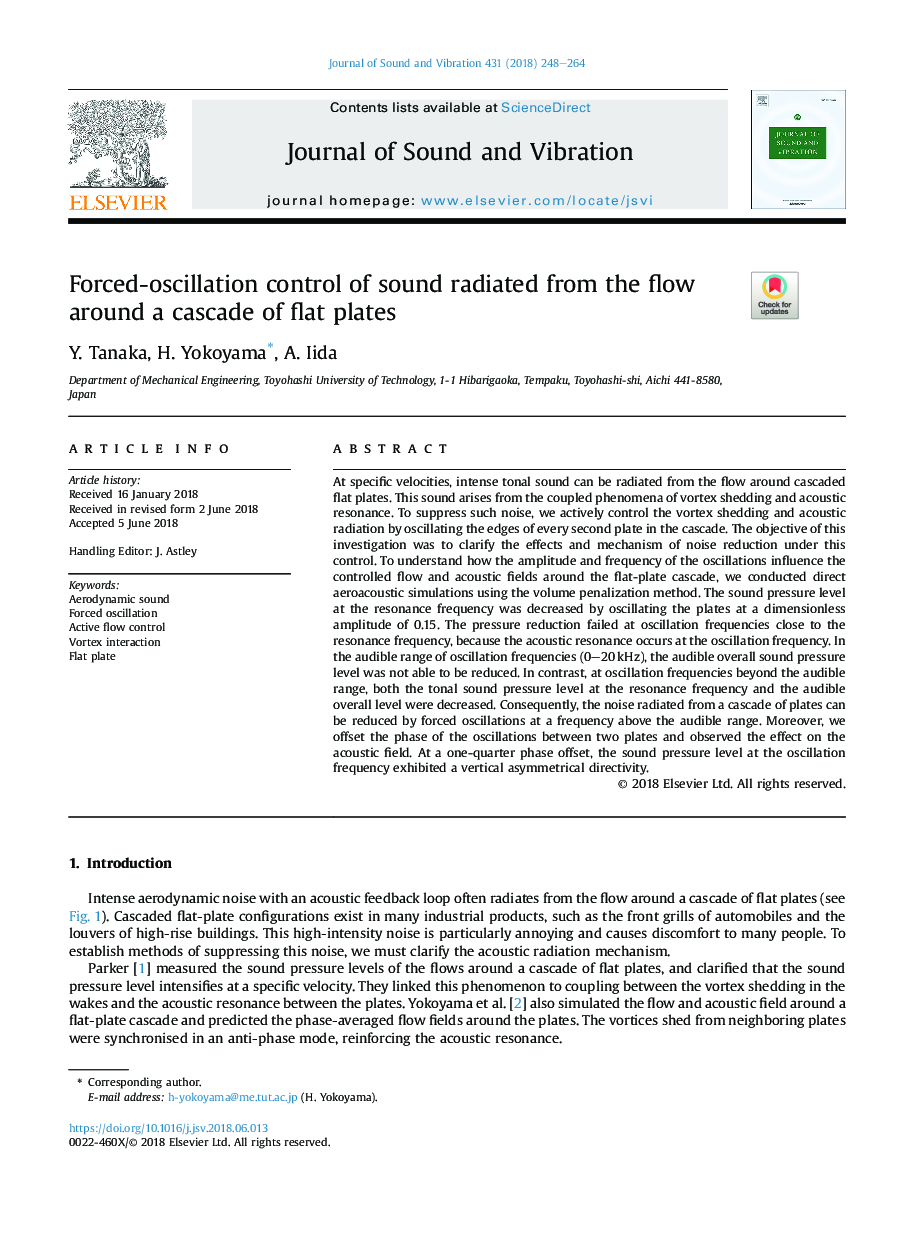| Article ID | Journal | Published Year | Pages | File Type |
|---|---|---|---|---|
| 6752770 | Journal of Sound and Vibration | 2018 | 17 Pages |
Abstract
At specific velocities, intense tonal sound can be radiated from the flow around cascaded flat plates. This sound arises from the coupled phenomena of vortex shedding and acoustic resonance. To suppress such noise, we actively control the vortex shedding and acoustic radiation by oscillating the edges of every second plate in the cascade. The objective of this investigation was to clarify the effects and mechanism of noise reduction under this control. To understand how the amplitude and frequency of the oscillations influence the controlled flow and acoustic fields around the flat-plate cascade, we conducted direct aeroacoustic simulations using the volume penalization method. The sound pressure level at the resonance frequency was decreased by oscillating the plates at a dimensionless amplitude of 0.15. The pressure reduction failed at oscillation frequencies close to the resonance frequency, because the acoustic resonance occurs at the oscillation frequency. In the audible range of oscillation frequencies (0-20â¯kHz), the audible overall sound pressure level was not able to be reduced. In contrast, at oscillation frequencies beyond the audible range, both the tonal sound pressure level at the resonance frequency and the audible overall level were decreased. Consequently, the noise radiated from a cascade of plates can be reduced by forced oscillations at a frequency above the audible range. Moreover, we offset the phase of the oscillations between two plates and observed the effect on the acoustic field. At a one-quarter phase offset, the sound pressure level at the oscillation frequency exhibited a vertical asymmetrical directivity.
Related Topics
Physical Sciences and Engineering
Engineering
Civil and Structural Engineering
Authors
Y. Tanaka, H. Yokoyama, A. Iida,
